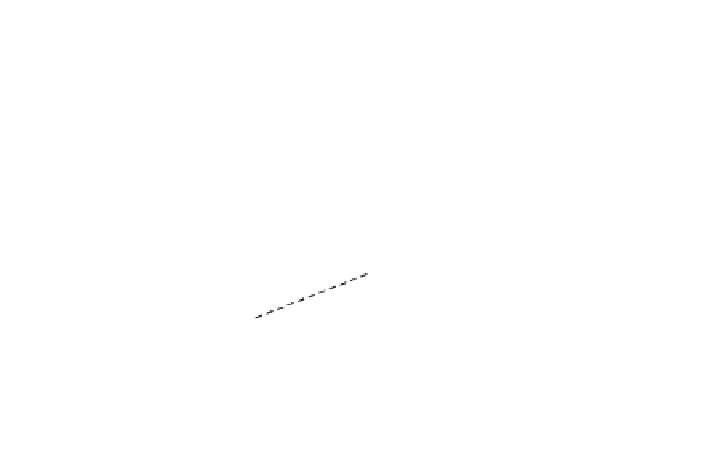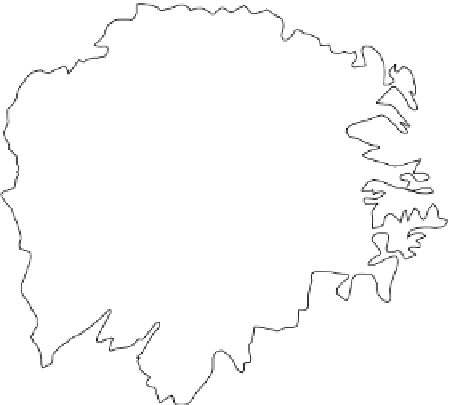Geology Reference
In-Depth Information
Fig. 4.22 The volcanic
complex (solid dots)
associated with Bolsena
caldera showing adjacent
fields of Latera caldera (after
Turbeville 1993)
Torre Alfina
Orvieto
Acquapendente
Onano
S. Lorenzo N.
Sorano
Grotte
di. C.
Sovana
Vepe
Caldera
Bolsena
Bagnoregia
Lake
Bolsena
Ubriano
Pitigliano
Latera
Latera Caldera
Valentano
Isnia Di. C.
Capodimonte
Piansano
Monteliascone
Piaman
Cellere
Tessannano
apino
Artena
Tuscania
Viterbo
N
10 Km
chaotic collapse. There was also subsidence in the northwestern sector. Deep
drilling has shown the presence of volcanic breccia in the southwestern section of
Latera caldera. There are four breccia layers (A, B, C and D) overlying earlier
activities of Paleo Bolsena and Bolsena complexes. This area is interpreted as a
source of oldest Latera ignimbrite. The Latera explosive activity shifted towards
northeastern side, where ignimbrites designated as E and F were erupted. The most
recent collapse of Latera Caldera affected the northwestern sector producing the
Veple caldera showing subsidence due to a ring-fractured system. Analyses of
K-rich rocks from Vulsini Complex are given in Table
4.16
.
4.8.4.3 Vico Complex
The Vico volcanic complex (Fig.
4.20
b) with six pyroclastic formations and lava
flows occur south of the Vulsini complex. The lavas are characterized by low
magnesia, iron and lime and relatively low SiO
2
contents, compared to most other
volcanic complexes of Italy. The lavas are porphyritic comprising leucite, clino-
pyroxene, alkali feldspar and plagioclase with accessory mica and Fe-Ti
Ti oxides
(up to a cm across). According to Cundari and Mattias (1974), the rock has
glomeroporphyritic texture, and clinopyroxene
-
±
plagioclase
±
mica is widespread
in the lavas. The rocks are mainly,
(1) Trachyte,
(2) Phonolite, and
(3) Tephrite and their variants.



















































































Search WWH ::

Custom Search